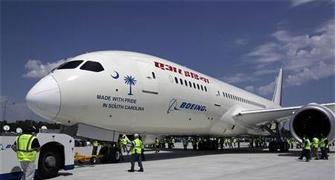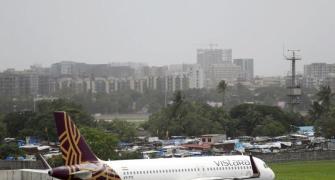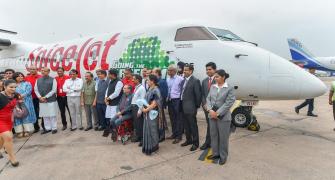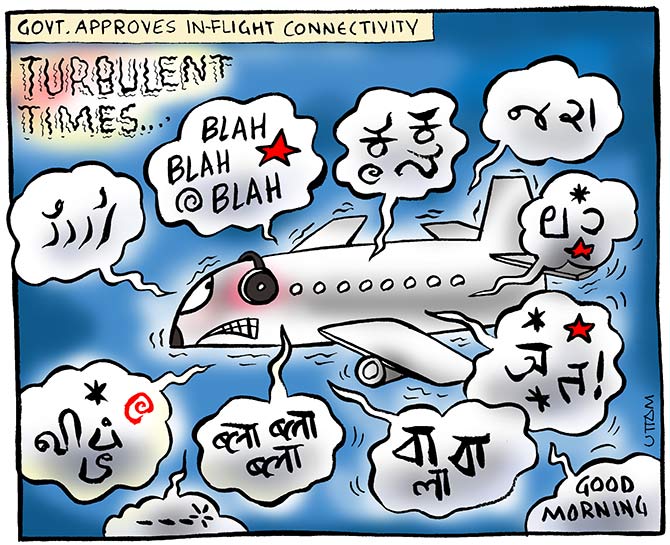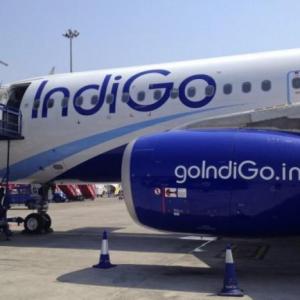UDAN demonstrates that good policy-making can fulfill important public requirements without requiring budgetary support, says MoS for civil aviation Jayant Sinha.

UDAN (Ude Desh ka Aam Naagrik) is one of the flagship programmes of the Narendra Modi government. Its outstanding success makes the dream of the prime minister of "hawai yatra for the hawai chappal citizen" a reality.
Towns and cities which had never anticipated that they would be connected to the aviation network are being integrated into India's efficient and reasonably-priced network. UDAN has resulted in many airlines rushing to provide regional connectivity. So successful has the scheme been that major carriers have updated their business models to cater to the regional market.
Unleashing market forces through policy design:
UDAN is designed to jump-start the regional aviation market by improving the profitability of under-developed regional routes by harnessing the power of the market. It builds on similar regional connectivity programmes in the US, Canada, and Australia. These large countries support regional connectivity directly through budgetary allocations.
UDAN is a first-of-its-kind scheme, which levies a small fee on flights on major metro routes to fund regional connectivity. The levy on flights on the major routes is estimated to collect around Rs 3.48 billion annually (or around $50 million). This is about 17 per cent of the $290 million allocated by the US government to its Essential Air Services programme in 2016.
UDAN was developed through extensive and multiple consultations with stakeholders to make it a win-win scheme for passengers and airlines. Passengers get air connectivity to their cities and the ability to fly for a subsidised price of Rs 2,500 an hour.
The routes to be connected were chosen by airlines themselves based on their assessment of the market demand between various sectors.
The scheme operates at three levels to ensure route profitability:
(1) reducing operating costs significantly;
(2) providing a market-discovered subsidy for half the seats; and
(3) guaranteeing three-year exclusivity on routes. Operating costs are reduced by reducing taxes on aviation turbine fuel and eliminating airport charges for UDAN routes, improving liquidity in the regional aircraft (typically turbo-props weighing less than 40 tonnes and having fewer than 80 seats) leasing market, and streamlining DGCA regulations for regional aircraft so that new airlines can get started with fewer upfront costs.
UDAN uses a market-based approach to establish subsidy levels, which are capped on the basis of operating costs estimated from actual industry data for different type of aircraft.
Routes are awarded to the bidder bidding the lowest subsidy level for half the seats on the flight. These subsidised seats are priced on the basis of a varying rate schedule such that a 30-minute flight is priced at Rs 1,500, a 60-minute flight is priced Rs 2,500 and so on. The other half of seats can be sold at market prices.
Finally, the winning bidder gets three-year exclusivity on the route, incentivising them to invest in building up the route. It is encouraging to see that many bids asked for no subsidy -- the reduction in costs and the exclusivity were enough to jumpstart the market.
Stellar success
The UDAN scheme has transformed India's aviation network by growing the network by over 50 per cent in two years. It has brought all Indian states onto the aviation map by initiating scheduled air connectivity.
Pakyong near Gangtok in Sikkim was recently inaugurated by the prime minister, brining aviation connectivity to all states in India. The eastern-most airport in India at Passighat in Arunachal Pradesh was also activated under this scheme.
Air connectivity has now reached 36 UDAN airports within two years of the launch of the scheme: Adampur, Agra, Allahabad, Bathinda, Bhavnagar, Bikaner, Diu, Gwalior, Hubli, Jagdalpur, Jaisalmer, Jalgaon, Jamnagar, Jharsuguda, Jorhat, Kadapa, Kandla, Kanpur, Kishangarh, Kolhapur, Ludhiana, Mundra, Mysore, Nanded, Ozar (Nasik), Pakyong, Pathankot, Porbandar, Puducherry, Salem, Shillong, Shimla, Tezpur and Vidyanagar.
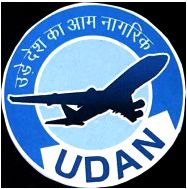
Air service has been halted in a few airports owing to the inability of the winning bidder to provide regular service, but these airports are being re-bid in the third round of bidding.
More than 888,000 passengers had flown in more than 17,000 UDAN flights till mid-November 2018, of which more than 500,000 passengers have benefitted from the capped fares. Now the number of weekly UDAN flights is around 450 and around 28,000 passengers are being connected weekly. Flights have been overwhelmingly from the private sector: Alliance Air has a market-share of only 22.5 per cent, or less than a quarter, in all the UDAN seats sold.
The scheme has seen many airlines rush to provide connectivity to Indian citizens. So successful has the scheme been that major carriers have updated their business models to cater to this market. Indigo is bringing in 50 Airbus ATRs seating 78 passengers for its regional fleet and SpiceJet has placed an order for up to 50 Bombardier Q400s seating 90 passengers.
When the scheme was being finalised, many smaller players -- especially the non-scheduled operator permit holders -- wanted relaxed entry conditions so that they could start new carriers.
Some of them struggled to live up to the demands of a highly competitive aviation sector. UDAN bidding is unique because the government does not decide which routes will be available for bidding. This is decided by the airlines themselves on the basis of their demand projections.
After airlines make a viability gap funding bid for a particular sector or network, the route is opened up for counter-bidding. The first round of UDAN bidding focused on reviving underserved and unserved airports. The second round brought into focus priority areas in hill areas and island destinations by focusing on helicopters. The third round of bidding currently underway is focused on international and tourism routes.
UDAN demonstrates that good policy-making can fulfill important public requirements without requiring budgetary support. Its success is due to extensive stakeholder consultation, alignment with market forces, and dynamic policy-making. Flying is really becomin available to all.
Jayant Sinha is minister of state for civil aviation and a member of Parliament from Hazaribagh, Jharkhand. The views are personal.


